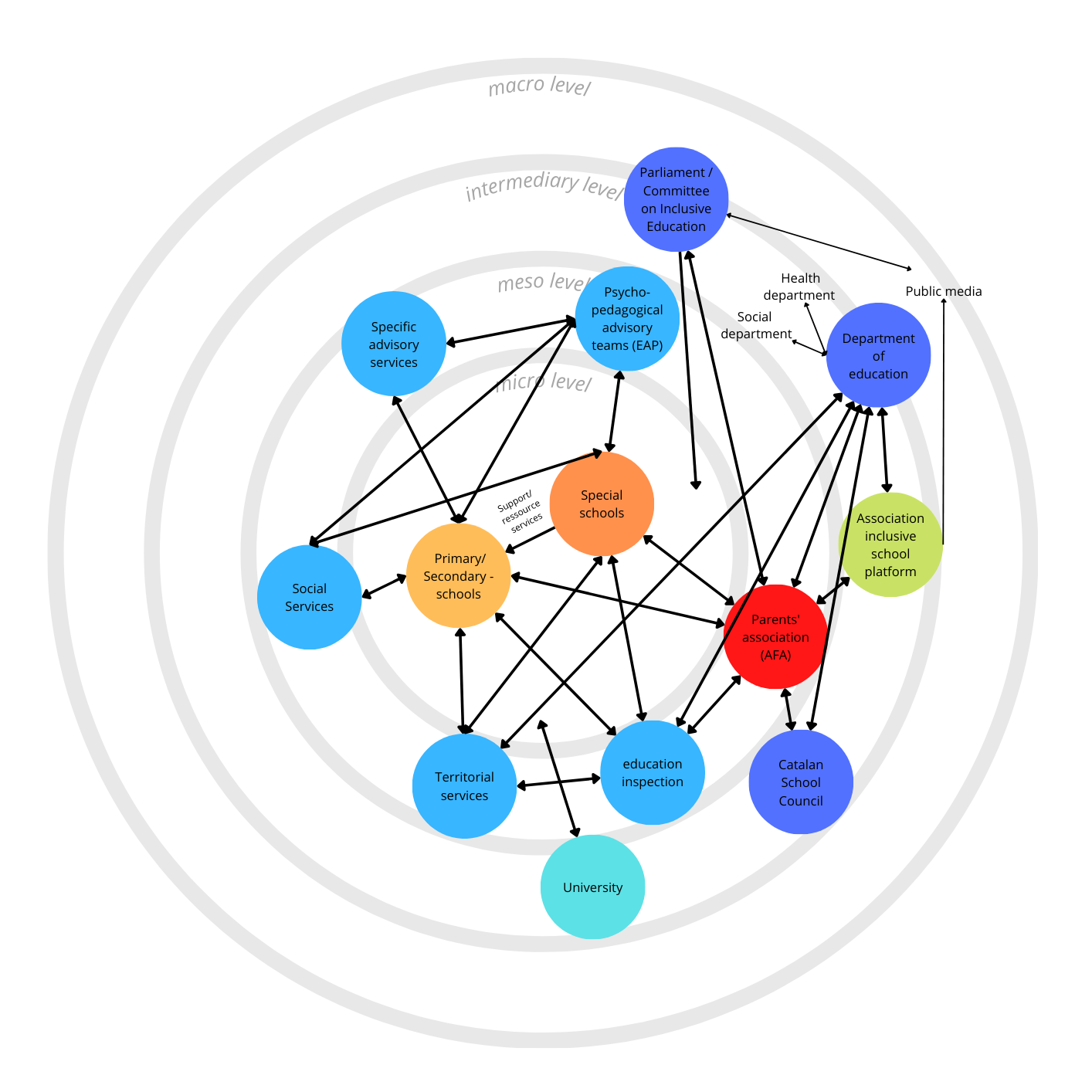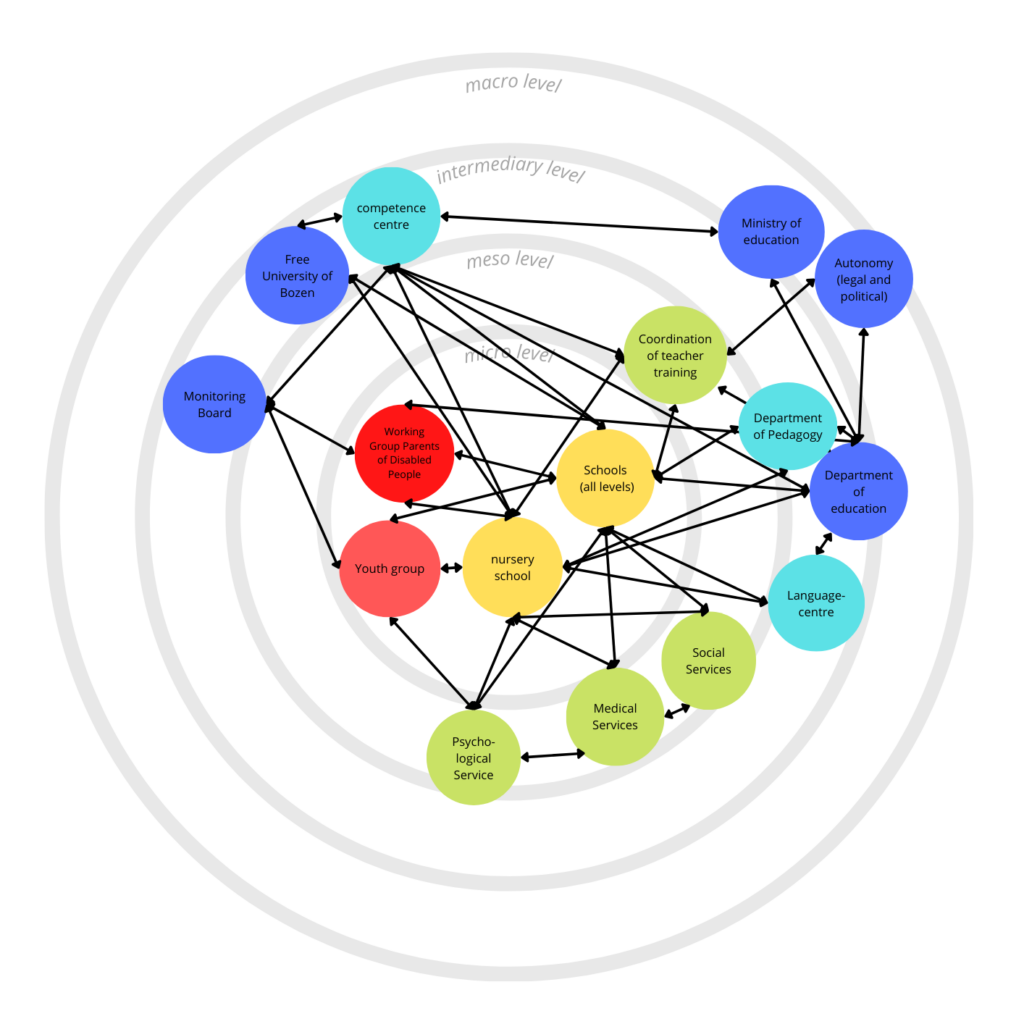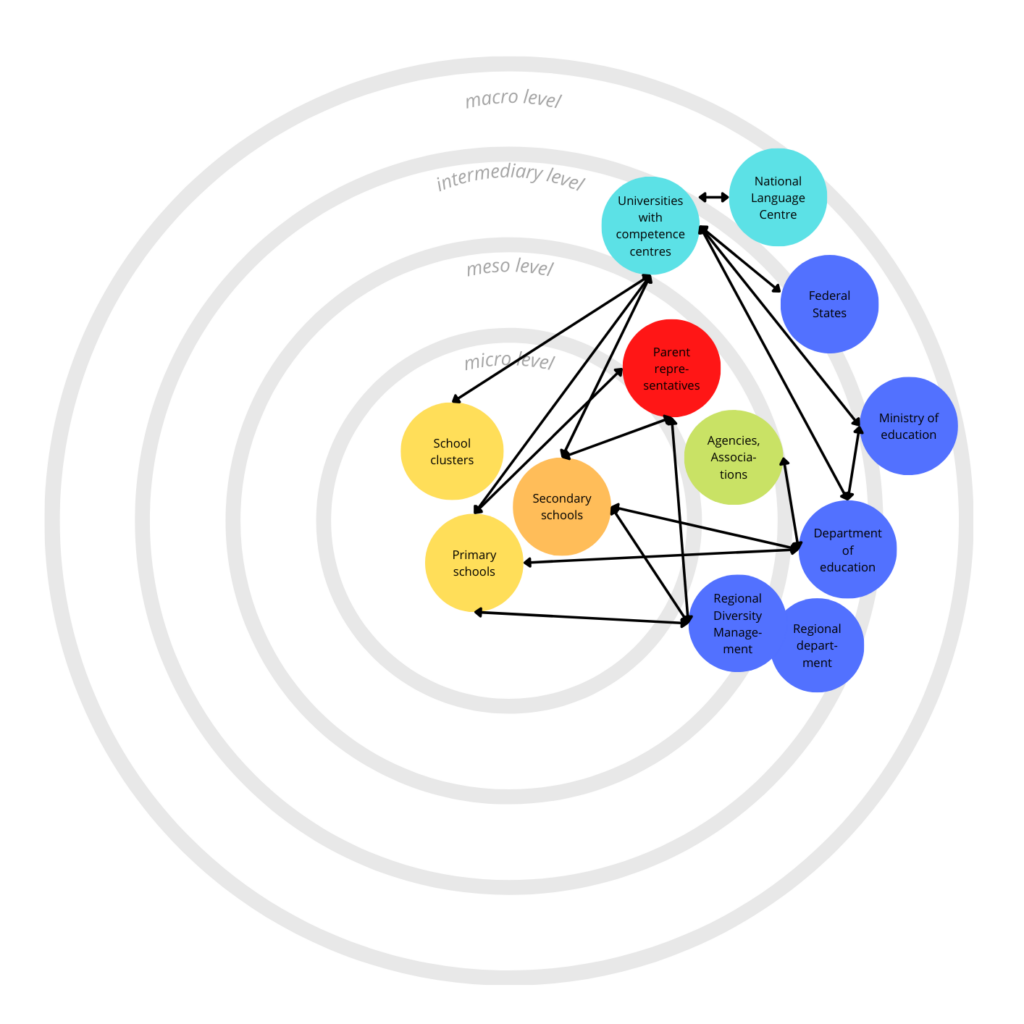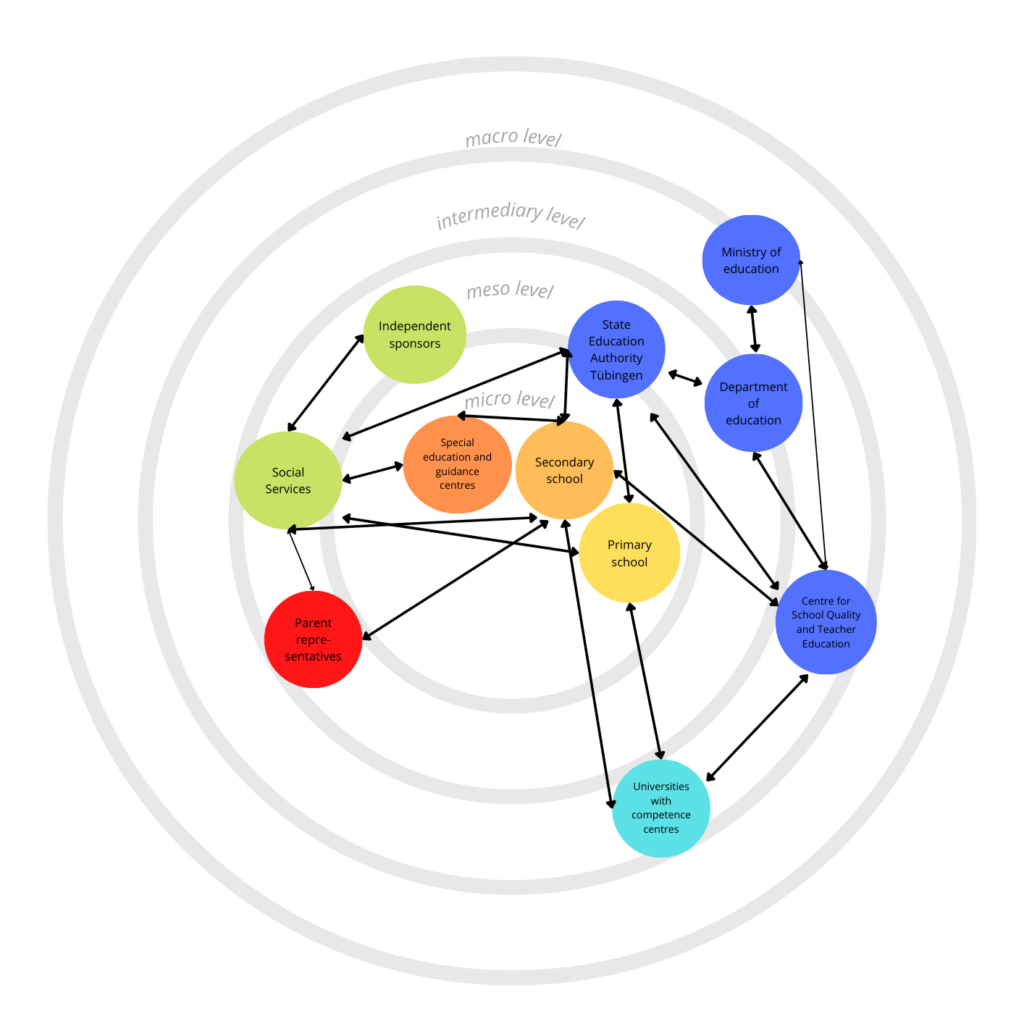Map yourself
Educational activities on the Actor & Network Maps
Individual and regional perspective:
- Observe all Actor and Network Maps in the English language version (the titles/ captions with the regions’ names have been removed). Can you guess which one refers to your region/ country?
- In your region’s map, which actors seem to interact with several other actors? (Observe the arrows and arrowheads.)
- Which actors seem to work on their own or to have few contacts with other actors? (If you have a printed copy of the map, you can make circles around or draw symbols on the map bubbles.)
- Does anything surprise you about your country map?
- Does anything bother or irritate you about your country map?
- Do any suggestions for improvement come to your mind by looking at your country map?
- To what extent do you agree with/ can you relate to the position attributed to your institution/ group in the map?
- Draw your own position on the map or grab a game piece and place it where you locate yourself on the map.
- Can you tell an anecdote about your interaction with another actor on the map?
- If you could spend one week in another institution or in another actor’s shoes, which institution/ actor would you choose?
International comparison:
- Are there actors who are present in all project countries?
- Which actors are specific for each project country respectively?
- Which societal and disciplinary areas seem to be most strongly involved in the governance of inclusive education in each country (politics, education, civil society, medicine…)?
- On which governance level(s) (micro, meso, intermediary, macro) is inclusion primarily tackled in each project country? (Observe actor distribution.
- Which project partner region/ country seems to have the most similar situation to yours regarding the governance of inclusive education?
- Which project partner region/ country seems to have the most different situation than yours regarding the governance of inclusive education?



